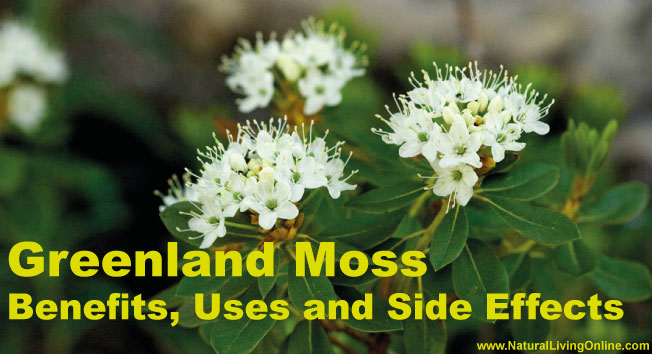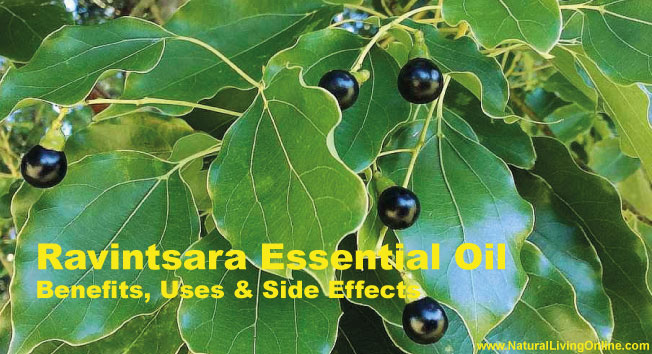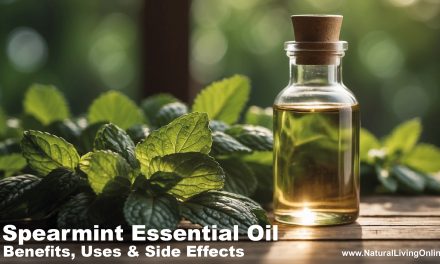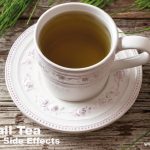Greenland Moss essential oil is often used as a natural treatment for respiratory problems. It can help to clear congestion, soothe coughs, and even reduce inflammation in the lungs. If you have asthma or bronchitis, this oil may be able to help you find relief. It also helps with skin problems, and even stress. This oil is extracted from the leaves of the Labrador tea plant, and it has a wide range of potential benefits. Keep reading to learn more about what this oil can do for you.
What is Greenland Moss?
Greenland moss is a type of lichen that grows in cold, damp areas. It’s also known as reindeer moss, because it’s a favorite food source for these animals. This plant is dark green in color, and it has a spongy texture.
Labrador Tea is not same as Greenland Moss. Labrador tea is a plant that’s closely related to Greenland moss. It grows in the same cold, damp areas, and it has many of the same properties. This plant is also used to make an essential oil.
Different types of Greenland Moss:
Cladonia rangiferina: This is the most common type of Greenland moss. It’s also known as reindeer moss, because it’s a favorite food source for these animals.
Cladonia stellaris: This type of moss is also known as star reindeer moss. It’s similar to C. rangiferina, but it has a star-shaped appearance.
How Greenland Moss Essential Oil is made?
Greenland moss essential oil is made by steam distilling the leaves. This process helps to preserve the beneficial compounds in the plant, and it results in a high-quality oil.
What is the botanical name of Greenland Moss?
The botanical name of Greenland moss is Cladonia rangiferina.
The chemical constituents of Greenland Moss essential oil (Greenland Moss Essential Oil Monograph):
The main chemical constituents of Greenland moss essential oil are:
usnic acid (27-41%)
fumarprotocetraric acid (12-27%)
fumarprotocetraric acid methyl ester (5-12%)
other minor constituents include: atranorin, vulpinic acid, perlatolic acid, and licheninic acid
What are the benefits of Greenland Moss Essential Oil?
The benefits of Greenland moss essential oil are largely due to its content of phytochemicals. These include usnic acid, .5-8% by dry weight, and various other diterpenes. These chemicals give the oil its antibacterial, anti-inflammatory, and expectorant properties.
Greenland moss essential oil offers a wide range of potential benefits. Here are some of the ways this oil can be used:
1. Respiratory problems: Greenland moss essential oil can help to clear congestion and soothe coughs. It’s also been shown to reduce inflammation in the lungs, which makes it a helpful treatment for asthma and bronchitis.
2. Skin problems: This oil can help to heal wounds, fight inflammation, and even reduce the appearance of scars.
3. Stress: Greenland moss essential oil has calming properties that can help to reduce stress and promote relaxation.
What are the side effects of Greenland Moss essential oil?
Greenland moss essential oil is generally safe for most people. However, it can cause skin irritation in some people. If you have sensitive skin, it’s best to dilute the oil before using it topically. It’s also important to note that this oil shouldn’t be taken internally. Doing so could lead to serious side effects.
Possible drug interactions:
Greenland moss essential oil could interact with certain medications. If you’re taking any medications, it’s best to speak with your doctor before using this oil.
What are ways to use Greenland Moss Essential Oil?
Greenland moss essential oil can be used in a variety of ways. It can be added to a diffuser to enjoy the benefits of aromatherapy. It can also be diluted with carrier oil and used topically on the skin. If you’re using this oil for respiratory problems, you can add a few drops to a steaming bowl of water and inhale the vapors.
Greenland Moss essential oil should not be used by:
-Pregnant women
-Children under the age of 12
-People with sensitive skin
-People with respiratory problems
-People with kidney or liver problems
Always speak with your doctor before using any essential oil, especially if you have a medical condition.
How can I use Greenland Moss Essential Oil internally?
Greenland Moss essential oil is not meant to be taken internally. Doing so could lead to serious side effects.
How can I use Greenland Moss Essential Oil topically?
Greenland Moss essential oil can be diluted with a carrier oil and applied topically to the skin. If you have sensitive skin, it’s best to do a patch test before using this oil.
How Greenland Moss Essential Oil helps in aromatherapy?
Greenland Moss essential oil has a number of benefits that make it ideal for aromatherapy. Its calming properties can help to reduce stress and promote relaxation. This oil can also help to clear congestion and soothe coughs. When diffused, Greenland moss essential oil can help to purify the air and freshen the scent of any room.
Great Essential Oil diffuser blends for aromatherapy with Greenland Moss Essential Oil:
1. Relaxation Blend: Add 3 drops of lavender oil, 3 drops of chamomile oil, and 2 drops of Greenland moss essential oil to your diffuser.
2. Clearing Blend: Add 3 drops of eucalyptus oil, 2 drops of rosemary oil, and 2 drops of Greenland moss essential oil to your diffuser.
3. Energizing Blend: Add 4 drops of grapefruit oil, 3 drops of lemon oil, and 2 drops of Greenland moss essential oil to your diffuser.
4. Purifying Blend: Add 3 drops of lemongrass oil, 3 drops of tea tree oil, and 2 drops of Greenland moss essential oil to your diffuser.
5. Warming Blend: Add 3 drops of ginger oil, 2 drops of cinnamon oil, and 2 drops of Greenland moss essential oil to your diffuser.
6. Uplifting Blend: Add 3 drops of Bergamot oil, 2 drops of lavender oil, and 2 drops of Greenland moss essential oil to your diffuser.
7. Calming Blend: Add 3 drops of ylang ylang oil, 3 drops of chamomile oil, and 2 drops of Greenland moss essential oil to your diffuser.
How can I use Greenland Moss Essential Oil in bath?
Add a few drops of Greenland moss essential oil to your bathtub for a relaxing, stress-relieving experience. For an added boost, add a handful of Epsom salt to help soothe any muscle aches or pains.
Historical use of Greenland Moss as a herbal medicine:
Greenland moss has a long history of use as a herbal medicine. It was traditionally used to treat a variety of respiratory problems, including bronchitis, coughs, and congestion. It was also used topically to treat wounds and skin problems.
What blends well with Greenland Moss Essential Oil?
Greenland moss essential oil blends well with eucalyptus oil, rosemary oil, lavender oil, chamomile oil, grapefruit oil, lemon oil, lemongrass oil, tea tree oil, ginger oil, cinnamon oil, and Bergamot oil.
What does Greenland Moss Essential Oil smell like?
Greenland moss essential oil has a woody, earthy scent with camphoraceous undertones.
Can I make Greenland Moss Essential Oil at home with infusion method?
Yes, you can make Greenland Moss Essential Oil at home using the infusion method. To do this, you will need:
-1/4 cup of dried Greenland moss
-1 cup of carrier oil (coconut oil, jojoba oil, etc.)
-A glass jar
-A strainer or cheesecloth
Instructions:
1. Place the dried Greenland moss in the glass jar.
2. Pour the carrier oil over the moss, making sure that it is completely covered.
3. Seal the jar and place it in a sunny spot. Infuse for 2-4 weeks, shaking the jar occasionally.
4. After the infusion period, strain the oil using a strainer or cheesecloth.
5. Store the oil in a dark glass bottle and keep it in a cool, dark place.
What is the shelf life of Greenland Moss Essential Oil?
Homemade Greenland Moss Essential Oil has a shelf life of 1 year when stored properly. Store in a cool, dark place.
Is Greenland Moss Essential Oil safe for kids?
Greenland Moss Essential Oil is considered safe for kids when used in low concentrations and with proper supervision. As with any essential oil, it is always best to consult with a healthcare professional before using it on children.
Can Greenland Moss Essential Oil be used on pets?
Greenland Moss Essential Oil is considered safe for pets when used in low concentrations and with proper supervision. As with any essential oil, it is always best to consult with a veterinarian before using it on pets.
DIY recipes using Greenland Moss Essential Oil:
1. DIY Foot Soak: Add 1 cup of Epsom salt, 1/4 cup of baking soda, 10 drops of Greenland moss essential oil, and 10 drops of lavender essential oil to a large bowl or basin. Fill the bowl with warm water and soak your feet for 20 minutes.
2. DIY Massage Oil: Combine 1/4 cup of carrier oil, 10 drops of Greenland moss essential oil, and 5 drops of lavender essential oil in a small glass bottle. Shake well and massage into sore muscles as needed.
3. DIY Bath Bomb: In a medium-sized bowl, combine 1 cup of baking soda, 1/2 cup of citric acid, 1/4 cup of cornstarch, and 10 drops of Greenland moss essential oil. Mix well and store in an airtight container. To use, drop one bomb into a warm bath and enjoy!
4. DIY Room Spray: In a small glass spray bottle, combine 1/2 cup of distilled water, 1/4 cup of vodka, 10 drops of Greenland moss essential oil, and 5 drops of lavender essential oil. Shake well and spritz around the room as desired.
5. DIY Reed Diffuser: In a small glass jar or bottle, combine 1/4 cup of carrier oil, 10 drops of Greenland moss essential oil, and 5 drops of lemongrass essential oil. Insert reeds into the diffuser and wait 24 hours before flipping them. Enjoy your fresh-smelling home!
This website does not provide medical advice.
All information provided on this website, and on associated social media networks, including but not limited to texts, images, and numbers are for general information purpose only. It is not intended as medical advice and it does not include all possible precautions, side effects, or interactions that may occur. Neither NaturalLivingOnline.com nor its author/founder take responsibility for how you use this information. Statements contained on NaturalLivingOnline.com have not been evaluated by the FDA. You should conduct thorough research via multiple sources and consult your physician or qualified doctor before using any essential oil or herbal remedy. Information on NaturalLivingOnline.com must not be relied upon for medical, legal, financial or other decisions.













